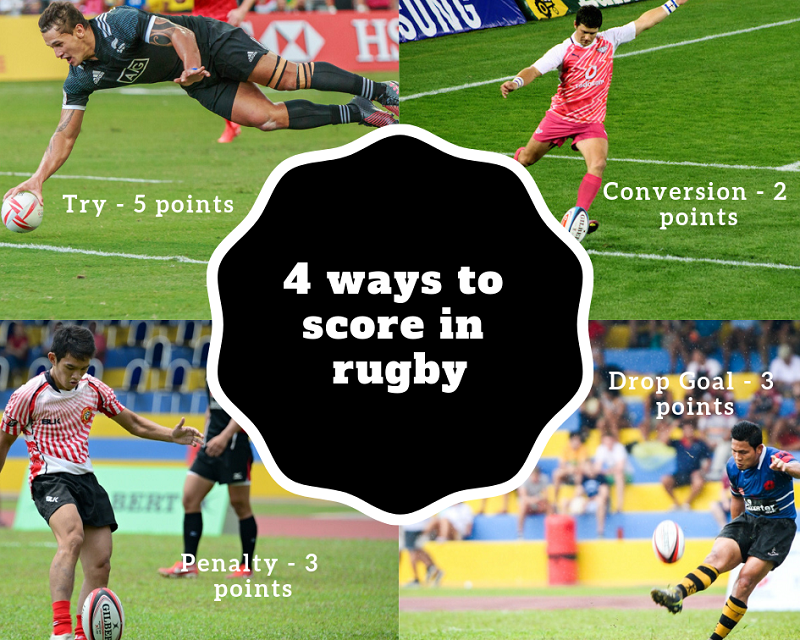How does the rugby point scoring system work?
Click here to get your tickets to the HSBC Singapore Rugby Sevens!
Unlike most other sports, there are various ways to score points in rugby union. From tries, conversions to drop goals, find out how many points each is worth.
 Credit: Gary Yang/ SportSG
Credit: Gary Yang/ SportSG
1. Try - 5 points
A try is the primary method and the most common way to score in rugby that earns the team the most points. Worth five points, a try is effectively scored when a player grounds the ball by applying downward pressure on it on the goal line, in the ‘in-goal’ area, or touching the ball at the base of the goalposts.
There are only two ways a try will be awarded:
- A player holding the ball with one or both arms touches the ball in the ‘in-goal’ area
- The rugby ball which is already on the ground in the ‘in-goal’ area receives downwards pressure from a player’s hands or arms or the front of the body from the waist to the neck.
In cases when the referee deems that the defending team has applied foul means to prevent a try from being scored, a penalty try is awarded. Such tries are awarded right in the middle of the goal posts, allowing the attacking team to execute a simpler conversion kick.
2. Conversion - 2 points
After each try, teams are given the opportunity to score two additional points by the means of a conversion kick. This kick is taken at any point in the field of play in line to where the try was scored and parallel to the touch line so teams therefore aim to score a try as close as possible to the goalposts. A successful conversion attempt happens when the ball is kicked above the crossbar and between the posts. While conversions are usually in the form of a place kick (by teeing the ball upright on the ground), they may be attempted as a drop kick, which is how conversions are done for rugby sevens.
Fun Fact: Daniel Carter of New Zealand holds the current record of the most number of successful conversion kicks made in Rugby World Cup, 58 in total during his career with the All Blacks.
Watch Daniel Carter’s stunning performance during the 2015 Rugby World Cup Finals.
3. Penalty Kick – 3 points
In the event that the defending team commits a major infringement, the attacking team can then choose to take a penalty kick at the spot where the foul occurs. Penalty kicks are place kicks where a player has one minute from the time the ball is teed up to when it’s kicked before the opposition team can charge it down. Just like during a conversion attempt, should the ball fall over after the 60 seconds grace period is up, the kicker will then have to kick the ball from where it lies or quickly pick it up and attempt a drop kick.
Fun Fact: Check out the longest rugby penalty ever back in 1986!
5. Bonus points system
In league and tournament play involving group tables, teams are awarded four points for a win and two for a draw. To encourage attacking rugby and more tries in the game, a bonus point is awarded to teams who score four or more tries while a team can also earn a bonus point for losing by 7 points or less. Note that a team can only earn a maximum of five points in a match.
To receive the latest updates on the happenings in the Singapore sports scene, or to find out more about some of the latest programmes on offer at ActiveSG, like our Facebook page here.





![ActiveSG Academies and Clubs Logo (Solid Colour)[8647]](https://www.activesgcircle.gov.sg/hs-fs/hubfs/ActiveSG%20Circle%202023Theme/images/ActiveSG%20Academies%20and%20Clubs%20Logo%20(Solid%20Colour)%5B8647%5D.png?width=150&height=65&name=ActiveSG%20Academies%20and%20Clubs%20Logo%20(Solid%20Colour)%5B8647%5D.png)



-01.png?width=200&height=141&name=Team%20Singapore%20Logo%20(Red)-01.png)



